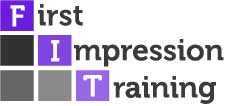I read a fascinating paper recently from Puzzel (www.puzzel.com) who conducted a survey focusing on how much emphasis customer service leaders and managers place on the experiences and welfare of their frontline staff in the quest to improve customer experience. The survey focused on 6 questions and the responses were very interesting, with 35% of respondents confirming they did have a strategy for employee wellbeing in place, while 34% did not.
Strategies are easy to write, but not so easy to implement and, when asked how they measured agent wellbeing, only 29% of those with a strategy went on to confirm they set specific goals for agent wellbeing improvements.
When asked exactly how employee wellbeing was being measured, the 3 most popular means of measurement were;
• ask agents what can be done to improve their working lives
• initiate regular surveys
• ask agents what matters to them
Clearly the most important methods centred around actively engaging with frontline staff to improve their wellbeing at work and then to monitor it at frequent intervals. Seems fairly obvious however, lower scoring means were equally interesting including;
• start with a baseline – how satisfied are they now?
• track progress made
• set goals for agent wellbeing improvements
• communication and personal contact between agents and managers
• regular social events (chosen by staff)
• 1:1 meetings and opportunities for managers to appear more approachable through regular floor-walking and informal coffee & catch-up sessions
• asking employees how they are and then listening to their feedback
• nominating a coach to ensure wellbeing issues are communicated to team leaders
When asked to define what ‘employee wellbeing’ meant, leaders definitions included:
• …working in a supportive environment where learning is fun and where staff have clear responsibilities and expectations
• Working in a culture that values openness where employees can express their experiences and opinions; are treated as individuals, while encouragement is given to everyone
• It’s a result of recognition and reward and gives staff the right support, technology and tools to do their job effectively
Empowerment and job satisfaction also featured highly with initiatives including;
• staff being able to pick their own shifts
• having opportunities to grow, in order to drive personal and career development
• A sense of purpose; sense of accomplishment and a clear understanding of how their role fits in the bigger picture
At the same time, it is recognised that frontline staff are key to delivering a high standard of customer experience, so their wellbeing is just as important as those CX surveys we conduct. Happy staff who feel valued and are listened to are considered to be more productive and better performers – indeed, according to a recent Harvard Business Review, they’re as much as 30% more committed; 12% more productive; 20% less likely to call in sick and a whopping 88% happier at work! In fact, low sickness and attrition rates were identified as effective barometers of employee wellbeing – a benefit many FIT clients have regularly experienced as a direct result of the training solutions we’ve implemented with them.
When asked what leaders felt ‘employee wellbeing’ meant to their staff, topping the poll was:
• a sense of purpose with clear goals
• having the right knowledge and tools to do the job
These results highlight the importance of communication and making life easy for staff by ensuring they’re equipped with the latest technology and functionality. Next in the list of importance came;
• easy to understand processes that are consistent and followed by everyone
• meaningful career path backed up with regular, relevant training
• opportunities to exchange ideas and experiences with managers and peers
Other important features contributing to staff happiness included;
• confidence to deal with enquiries on all products and services
• seeing how their role makes a real difference to corporate success
• a desire to feel stretched as long as they can cope – people are happier when they are challenged without being stressed out
• having enough interesting tasks to perform
• confidence to deal with different channels
Despite respondents advocating ‘empowerment’ in other parts of the survey as a means to create employee wellbeing, ‘freedom to work at a time and place to suit them’ came down at the bottom of the list of importance for 36% of frontline professionals. Yet, when it came to respondents offering other ways to build staff wellbeing, ‘flexible working’ was cited as a positive solution – and one that clearly needs to (re)considered, given the benefits flexible working can bring from both sides.
What are some of the barriers to employee wellbeing?
Here at FIT, we believe the vast majority of people come to work expecting to do a good or great job. Very few arrive in the morning consciously expecting to have a bad day or deliver poor performance!
In reality, there are some very real barriers to employee wellbeing, particularly in our classic contact centre environments today, with the survey citing ‘inconsistent processes’ and ‘IT issues &/or clunky technology’ as the primes culprits.
Additionally, having either too much to do, culminating in stressful conditions or having too little to do or too much time spent on mundane, repetitive tasks causing boredom, were also perceived to be major challenges to building a sense of wellbeing among staff.
Both factors are exacerbated by there being ‘few or no opportunities for personal development’ and the perception that staff feel no-one listens to them or takes their frontline experiences seriously. Down at the bottom of the list are barriers that relate to shifts from ‘inflexible &/or last-minute shifts’ to complaints about ‘the same people always get the unpopular shifts’.
Despite 18% of respondents claiming a ‘feeling of isolation when working virtually’ as a barrier, the same number of respondents imply a sense of resentment, when they have to come into work to do their job, when home-working could be possible.
When respondents were asked for other barriers to employee wellbeing, staffing issues and poor leadership featured strongly. From not having enough staff and agents being off sick regularly to personality conflicts and a perception that other teammates are not pulling their weight, staff issues covered a whole gamut of barriers. When it comes to leaders, unfair practices or conversely, taking a one size fits all approach and not considering their ,staff as individuals were the most commonly cited barriers to employee wellbeing.
The survey identified 22 areas that organisations could focus on to improve employee wellbeing, with the top 2 priorities for the majority of respondents being:
• to communicate expectations, goals and an overarching vision
• to create opportunities for self-development
Both underline the importance of communication and involving staff in contributing to corporate success. 68% say leaders should ‘highlight the contribution the operation / contact centre makes to the organisation’ while giving them the freedom to maximise their potential. This could be achieved by a ‘powerful knowledge base and the tools to do their job’ backed up by ‘clear and consistent processes that everyone follows’.
Managers have a significant role to play. First of all, they should ‘lead by example’ and ‘be approachable’. Next, respondents say leaders should ‘encourage collaboration with regular opportunities to ask questions, share knowledge and learning’ and ‘make time for training and 1:1 coaching’.
Further along the list they might also ‘consider flexible working in all its forms’, ‘build trust and teamwork with social events’ and ‘involve staff in decision-making’. Leaders should also look at the culture in their centres by ‘making learning fun and creating healthy competition using gamification’ while ‘empowering staff to delight customers in their own way’.
However, even managers cannot do everything themselves. They should look to ‘build a team of champions’ and ‘introduce a buddy or mentor programme for everyone’. The spotlight is drawn to openness with a ‘focus on transparency in everything’ and it starts from the very beginning with a ‘new starter programme’ and ‘making the most of WFM for better, fairer schedules’.
Many FIT readers will already know that we deliver large numbers of these initiatives in our culture-change programmes, so this really is an endorsement of our end-to-end solutions.
Until next time – keep FIT!


















